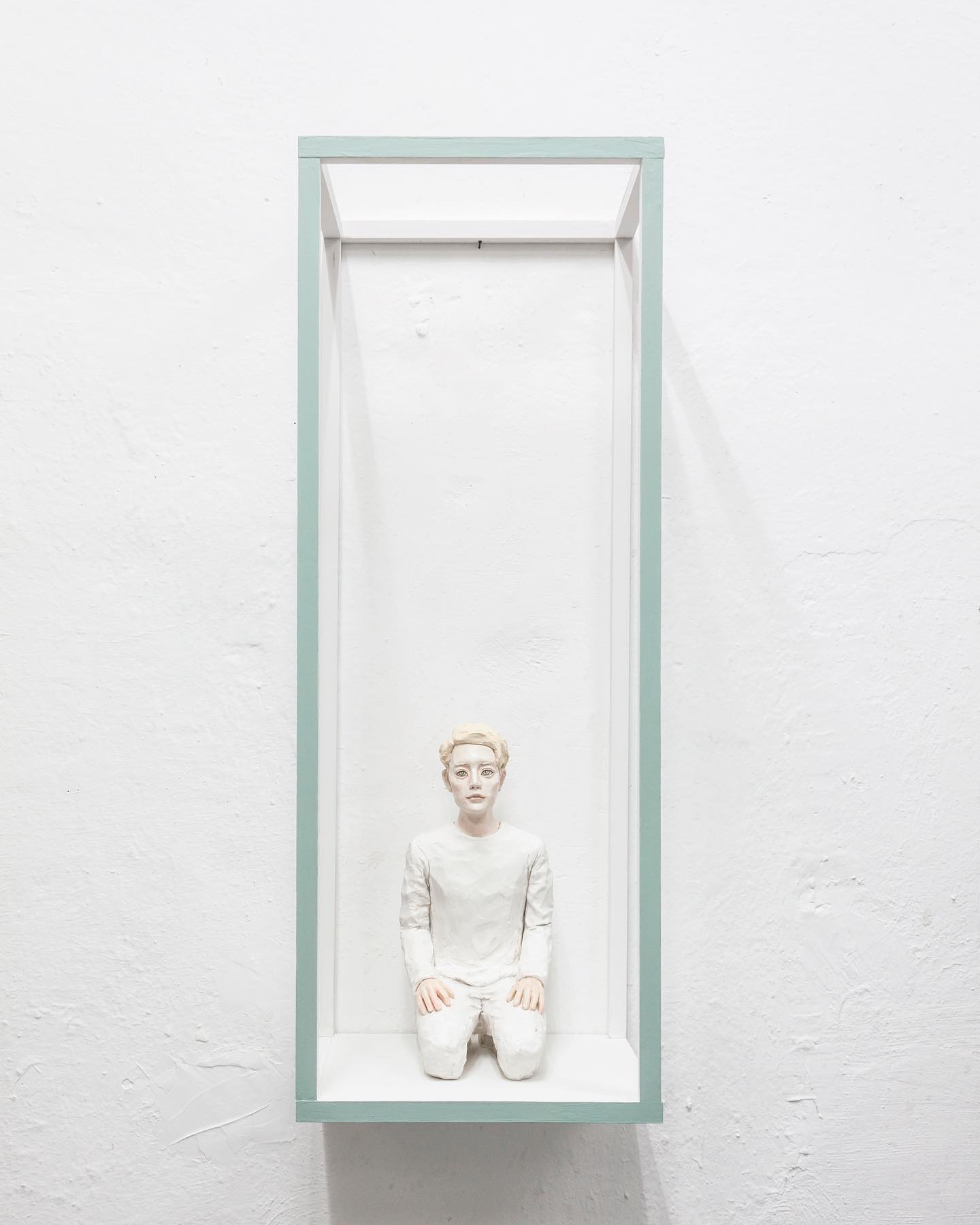
Hirofumi Fujiwara’s isolated sculptures are called Utopians, each person actually an amalgamation of features and cultures. Many of these characters, said to be from a parallel world, are presented inside of barriers as they “bear witness.”




“His human sculptures, modelled from clay and plastic, stand, sit or lie in the exhibition space, reposing, transparent walls are surrounding their fragile bodies,” Galerie Burster says of the artist. “Fujiwara’s Utopians bear witness to a romantic longing for the unreachable, with a contemplative view towards the indefinite. Oscillating between the two worlds, Fujiwara’s sculptures bear references from the Japanese as well as the European Western culture. They seem youthful and yet ageless, androgynous and detached from all stereotypes – isolated from this world, yet resting in the very moment, anchored in pure just-being.”
See more on the sculptor’s site.








 Though we have developed a culture that places us at the center of the universe, the forces of nature will continue to exist with our without mankind. This is a notion that Japanese sculptor
Though we have developed a culture that places us at the center of the universe, the forces of nature will continue to exist with our without mankind. This is a notion that Japanese sculptor  Gilles Cenazandotti is a French artist known for his arresting sculptures of animals constructed entirely of litter he collects from the ocean. Petroleum products, bottle caps, tubes of sunscreen, and other plastic refuse are gathered from the sea and transformed into a variety of species, many endangered. Through his art, Cenazandotti hopes to bring greater awareness to the condition of our planet and the number of species threatened by human activity and pollution.
Gilles Cenazandotti is a French artist known for his arresting sculptures of animals constructed entirely of litter he collects from the ocean. Petroleum products, bottle caps, tubes of sunscreen, and other plastic refuse are gathered from the sea and transformed into a variety of species, many endangered. Through his art, Cenazandotti hopes to bring greater awareness to the condition of our planet and the number of species threatened by human activity and pollution.
 Through the manipulation of 17 people, La Machine unleashed a dragon on Calais, France, with its latest, towering creation and performance. "Le Dragon de Calais" was unveiled earlier this month by the French group of artists, which was last featured on cctvta.com
Through the manipulation of 17 people, La Machine unleashed a dragon on Calais, France, with its latest, towering creation and performance. "Le Dragon de Calais" was unveiled earlier this month by the French group of artists, which was last featured on cctvta.com